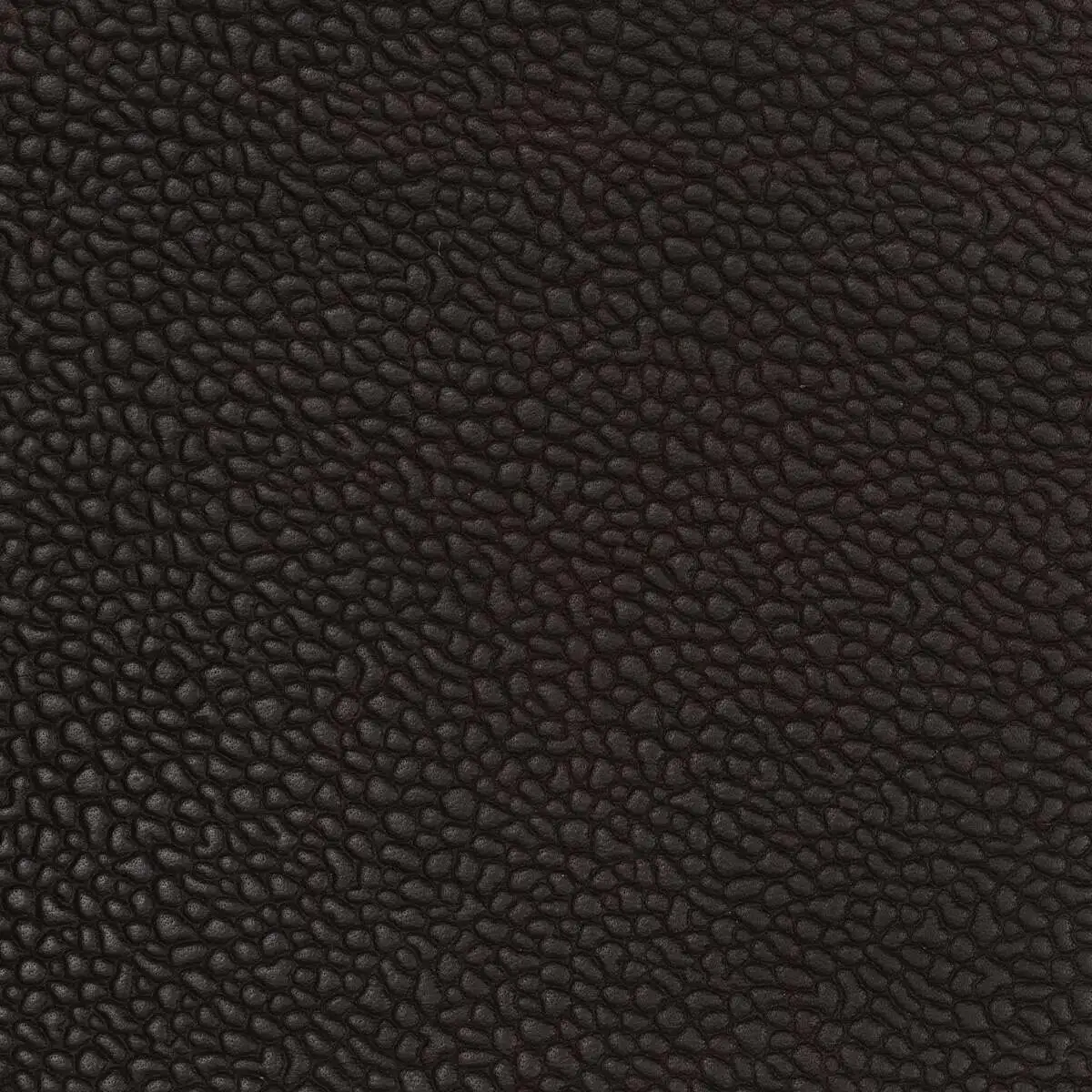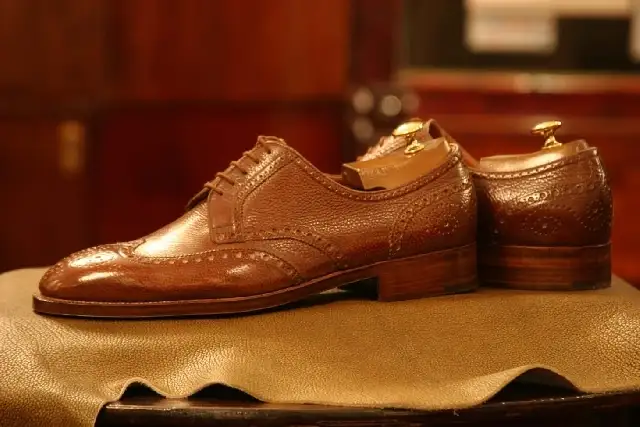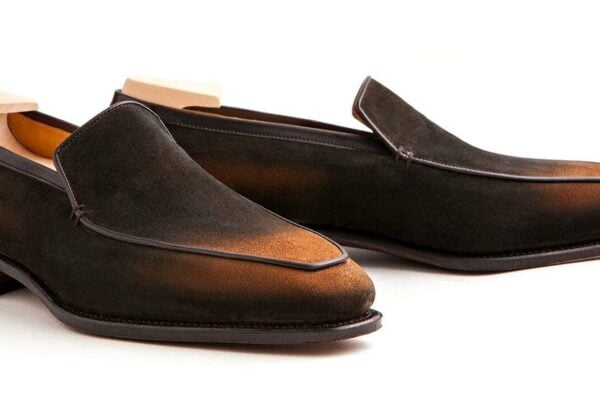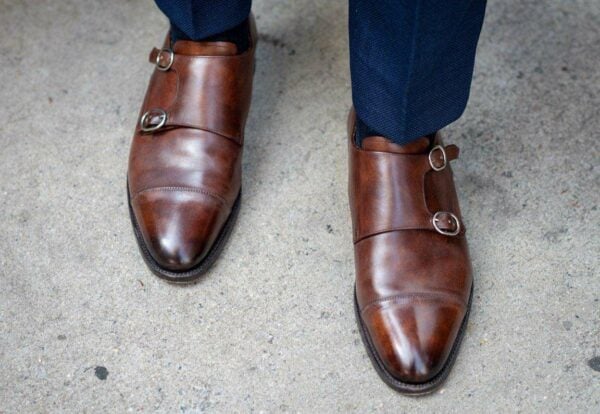
You have probably heard the term corrected grain leather before and many of you may or may not understand what that actually means. So let’s talk about it and see if we can shed some light on it.
Corrected grain leather is any leather whose surface has been altered in some sort of way or another in order to give it a certain appearance, one that is not natural to the actual hide. But this is not referring to color (dye’s etc like museum calf) but rather things that are done after the fact. This can be anything from sanding it down, stamping it, or what the real tricksters are good at i.e. applying a lacquer on the leather that hardens to give it a completely different surface and then claiming it to be ‘super leather.’
Historically corrected grain leather as a term is often frowned upon, and the majority of the time it is for good reason. Correcting a leather is a way to take a hide and make it look better than its natural state due to its potential scratches, scars, stretch marks, mosquito bites etc, all of which are prevalent in an animal that spends much of its time outside and being mistreated by the people that grow these cows simply for slaughter. The leather industry is a by-product of the meat industry and bigger than the leather industry for shoes is the one for cars. So, in reality, we in the shoe world suffer for great quality leather. Therefore, people have come up with ways to try and make the cheaper leather ‘look better’ and pass it off as top-of-the-line.





The only thing is that not all corrected grain is bad leather. In reality, all-grained leather shoes are corrected grain. Cows do not have skin that has a hatch, scotch, or pebbled surface. That is a stamp applied to the leather, after the fact. Your favorite hatch grain shoes/boots are corrected grain leather. That is not full-grain leather. But that doesn’t now make it bad or inferior.
Often blemishes in leather are nothing more than blemishes but we as a consumer have become so spoiled to think that everything should be perfect, whether we spent $200 or $2000 on it (which doesn’t make any logical sense really because if the $200 is perfect, what can then make the $2000 be worth its price ticket). We have become entitled and disillusioned (mainly by the salesman at stores and nonsensical marketing slogans) into believing that everything is hand-made in Italy (or wherever) and is ‘bespoke’ and this and that, all of which are flat-out lies. Essentially tanneries will correct the leather to make it ‘look perfect’ and shoe brands will buy the corrected grain to sell an idea at a premium price!



But again, leather with some blemishes is nothing more than that. Providing those blemishes haven’t harmed the integrity of the leather’s lifespan or made it weaker in any way, then, in reality, there is nothing wrong with it outside of aesthetics. But for those that would not want it due to the blemishes, yet the hide is perfectly strong and durable, then in my mind, it makes sense to stamp with it a scotch grain look and sell it to consumers as great leather for the harsh weather months. And boom, we have a win-win for everyone, and leather that just was a perfect 1st-grade, blemish-free can now be sold at 1st-grade mentality as it has been corrected to look flawless. And for me, there is nothing wrong with that as grained leather, for the most part is very durable, can be of high quality and can last a very long time, and looks quite nice.
So just because leather can be corrected does not necessarily make it inferior or bad. But also, many corrected grain leather shoes are very cheap and of low quality. So, it’s about knowing which type of corrected grain leather to not turn your nose up at and which types to do just that.
-Justin, ‘The Shoe Snob’















Great article. I just ordered a pair of Carrucci shoes (new company based in CA), and I’m wondering if these shoes are utilizing a corrected grain approach. Do these appear to be “overly” corrected grain? Thank you!
yes they do to be honest
These shoes look so cheap, and low quality. I’d never mention in a blog like this that I’m an owner of these type of shoes.
How do you identify corrected grain leather? Many people on places like styleforum comment on Loake’s, Barker, or Church’s being heavily grain corrected, difficult to know what to think.
It takes time if you are not so familiar with how calfskin should feel. Its any leather that has a added coating or alternative surface to the original piece of leather, thus hiding the blemishes of the orignal leather
Thanks for your reply, Justin. Are some cheaper brands more prone to using it? I’m thinking Loake and Barker for example, or Carlos Santos.
Sorry I am just seeing this comment now. Apparently lots of comments are going to my spam. Yes cheaper brands are more prone to use it for sure. Loake and Barker do. Carlos Santos less so